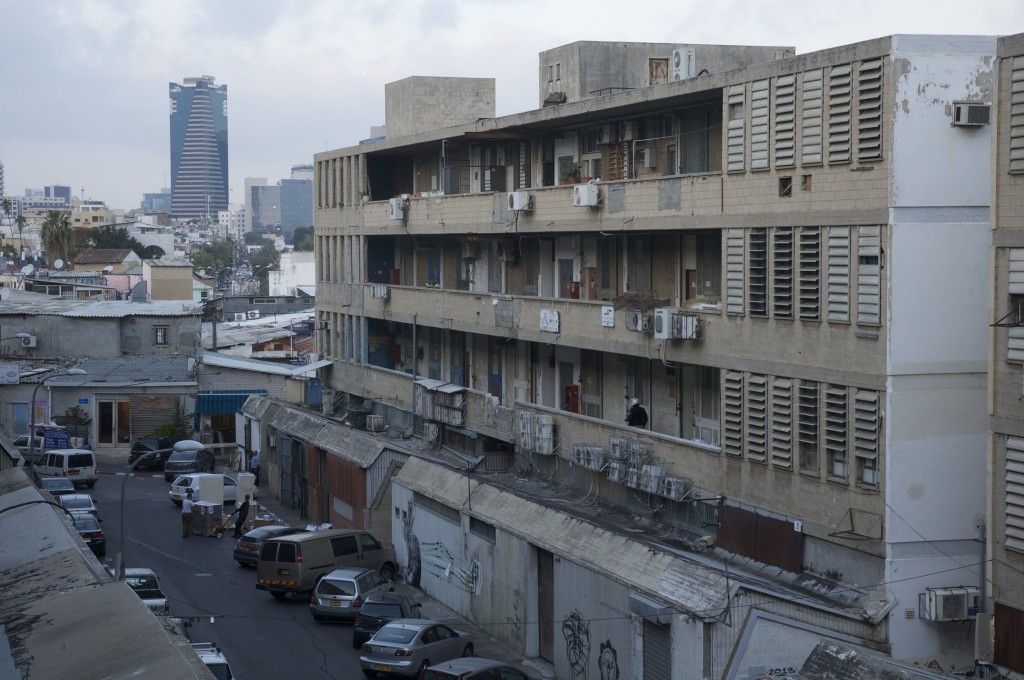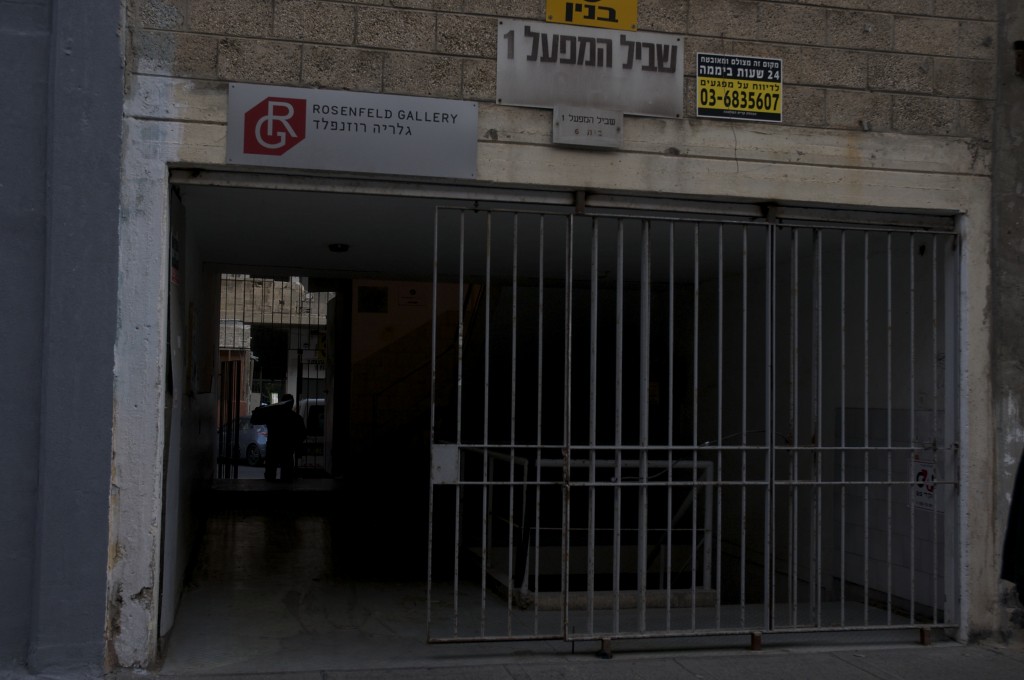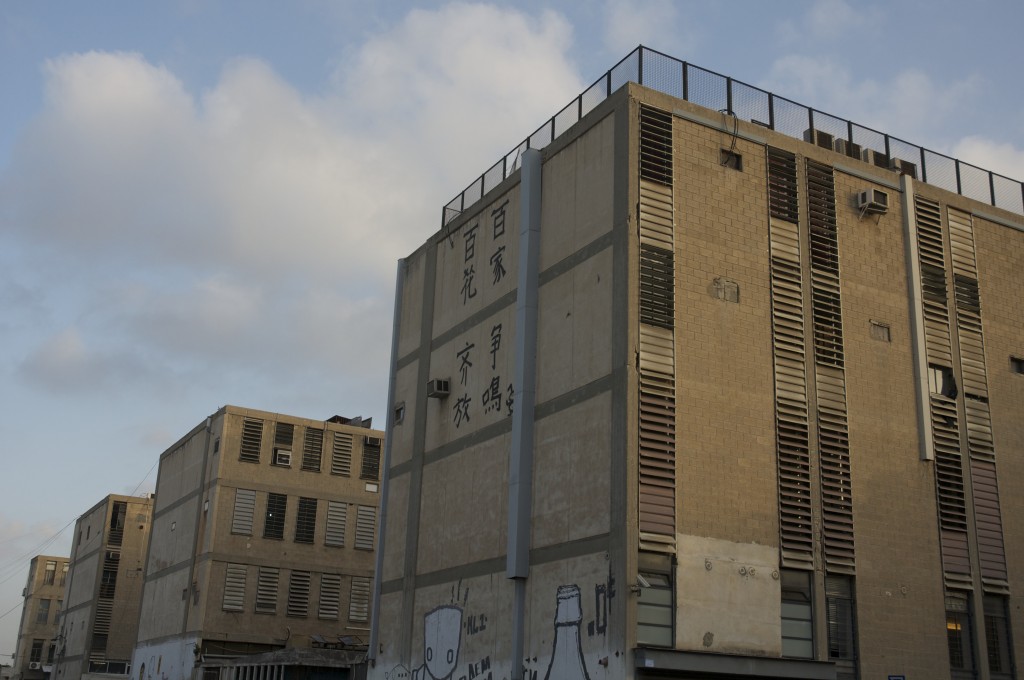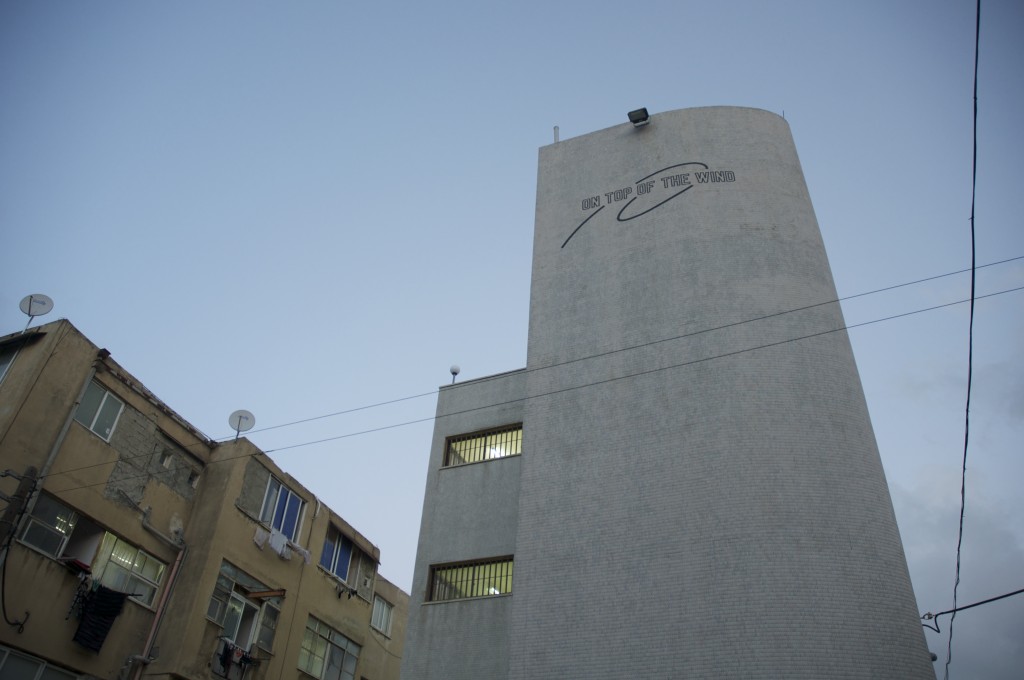Tel Aviv: Kiryat Hamelacha
by Sarah Peguine
A few months ago, I moved to the south of Tel Aviv – an area known, among other things, for its young inhabitants, its poor population, its derelict buildings, its large community of foreign workers, and in the past few years, for its growing gallery scene. I have always been fascinated by the Kiryat Hamelacha neighborhood, charmed by its mystery and roughness. I now feel lucky to live a stone’s throw away from some of the best galleries in Tel Aviv. Since moving to this area of the city, I have been trying to understand what types of galleries are opening and for what reasons, as well as what the future of this new artistic hub may turn out to be.

In 2009, after over 50 years in the posher area of the north of Tel Aviv, Zaki Rosenfeld, owner of the established Rosenfeld Gallery made a striking and, some might say, brave move to the Kiryat Hamelacha in the south of Tel Aviv. The Kiryat Hamelacha, with its buildings’ brutalist architecture from the 1960s, means in free translation: the “handicrafts compound” because it used to attract many small industries. Rosenfeld Gallery was the first main gallery in Tel Aviv to move to this area. The choice for this change was, according to the gallery’s director Adi Goldner, driven by factors related to contemporary art. Indeed, since the late 1990s, the gallery changed its orientation from representing classic “Modern” Israeli artists to representing younger contemporary artists. The gallery was therefore looking for a more appropriate industrial space to exhibit contemporary art, and wanted to focus on a very specific audience. In terms of proximity, the area was also more conducive to the work being produced locally, as it was nearer to the gallery artists’ studios, such as Zoya Cherkassky’s studio located just above the gallery. Goldner still expresses great satisfaction with this decision, understanding that the Kiryat Hamelacha area has also become a go-to for any art aficionado interested in the contemporary scene. She is optimistic about the area, as she believes it will continue to attract other main galleries, facilitating an audience to attend programming and events, some of which are already planned for this summer.

The co-owner of Inga Gallery, Revital Gal also mentioned the art factor when asked about the decision to move the gallery from an area near the more touristic Rothschild Boulevard to Kiryat Hamelacha four years ago. The reasons for the move were centered on a desire to concentrate more on the art program, and less on affluent locations – but also be nearer to the artists’ studios and to have the possibility of taking on a bigger space.
One of the major reasons the area attracts so many artists and galleries is of course the relatively low rent. Although it has gone up in the last couple of years, it is still considered to be lower and more attractive than other more central locations. This is why many artists are working in the Kiryat Hamelacha and why it is still interesting for gallery owners to open a space there. While not all gallerists will admit this as the primary focus, it remains a factor.

In 2010, The Shpilman Institute for Photography, a non-profit organization dedicated to creating a discourse around photography, opened its doors. The lush interior of the institute and its hi-tech storage spaces are perhaps very distinctive from the more industrial reputation of the area, its transformation contributing to the image of a more important and respectable art hub.
The arrival of completely new and young galleries to the quarter of the Kiryat Hamelacha began in early 2012. Ori Feinberg opened his venue, Feinberg Projects, where he shows both Israeli and international artists. As Feinberg explained, he was attracted by this location for “the neighborhood’s Chelsea-like air of the early 90s”. Another young gallerist, Yaniv Yehuda Eiger opened his gallery Z I Z last year in a tiny space in the only renovated building in the compound.
The impression of a growing scene in the south of Tel Aviv culminated two months ago with the inauguration of Dvir Gallery’s new space. The established, and internationally renowned gallery merged its three previous locations into a five-story building. The new space was inaugurated with three new shows, among which a solo exhibition for Lawrence Weiner whose text piece On Top of The Wind still remains on the building’s facade, a text that perhaps also indicates a wind of change for the south of Tel Aviv.

Interestingly, or surprisingly enough, most Israelis I know – let alone tourists – have never visited the Kiryat Hamelacha. However, after speaking to the gallerists, visiting the compound a few dozen times, and witnessing the change in the area, I feel certain that the south of Tel Aviv will continue to develop rapidly and attract attention from the local and international Art scene at large.